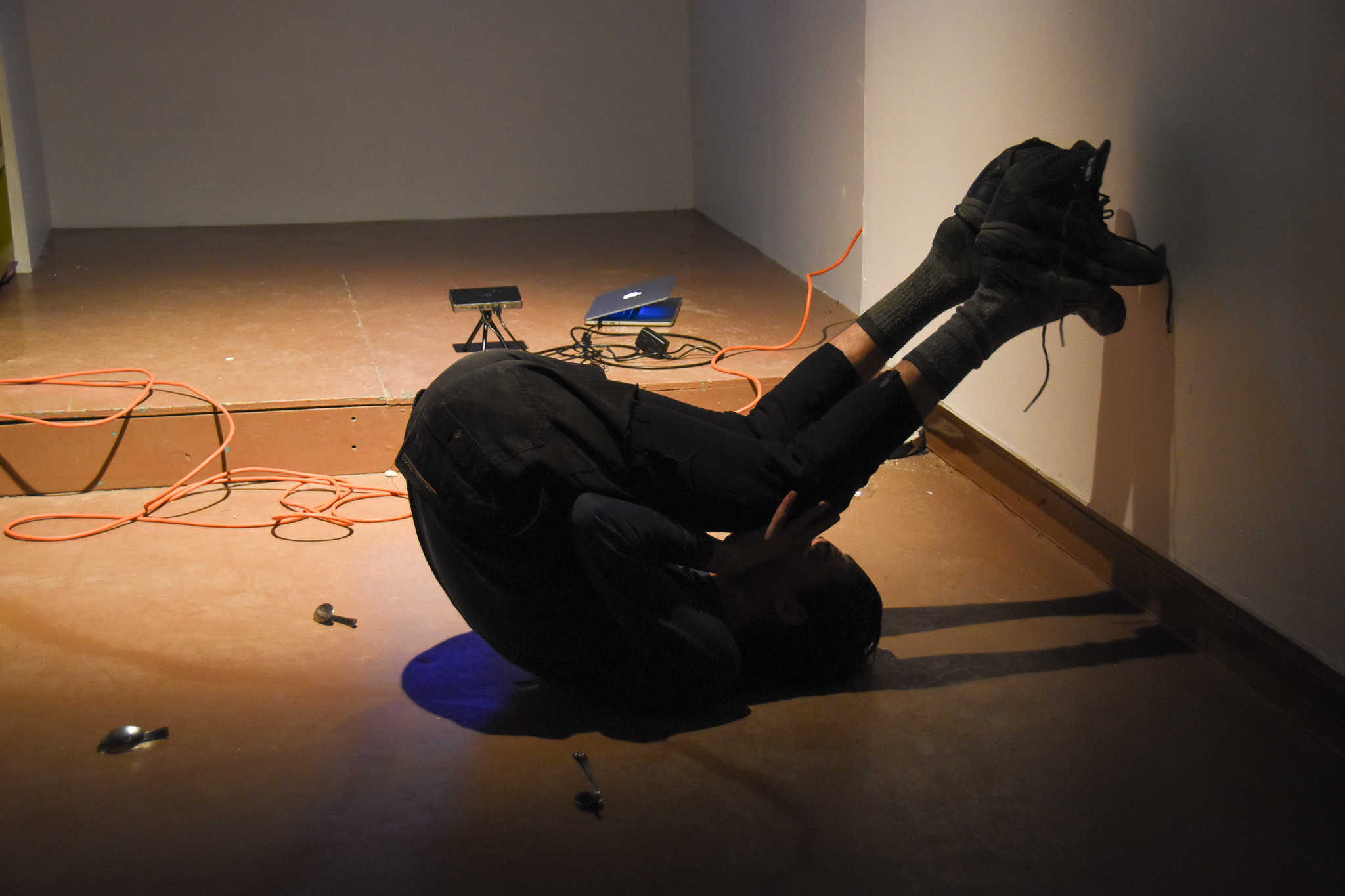Open Action Night offers artists a safe space to share their work
Full disclosure: When Lorenza Mezzapelle (Assistant Arts Editor) pitched Chloë Lalonde (Arts Editor) her story ideas for this week, saying she wanted to reach out to the students who started Open Action Night, Chloë laughed – the exact text reads “Omg I am ded. I started open action night.”
Painting, sculpture and film are prominent in the Montreal art scene, but where does one go to casually watch or engage in performance art?
Concordia students Merlin Heintzman Hope and Chloë Lalonde are hoping to change that with a new series called Open Action Night. Similarly to an open mic, participants are invited to sign up and perform anything.
“I think a lot of people want to see performance happening,” said Heintzman Hope, adding that most often, with the desire to perform comes an intensive application process, documentation, propositions, and juries, or alternatively, grading. “It’s not for visibility but rather, ‘oh I have these ideas, I have this live art work that benefits from being in front of people, and I want to be able to showcase it somewhere.’”
“Community-based and socially engaged artwork is a big focus for us,” said Heintzman Hope. “We started working together because we wanted to have more of that.”
With a focus on building a community around performance, Open Action Night aims to be accessible and inclusive. “We want to emphasize the child-friendliness of [the space],” said Lalonde.
“We think about age accessibility and would like that to be more of a thing, where art is for all people, where it should be,” said Heintzman Hope. “It should go for much older folk, it should go for children.”
While there are no confines as to what one can present, performers are asked to be mindful of their work, in an effort to create a safe-space.
“People should be considerate,” explained Lalonde. “They should think about what they would feel comfortable having a child witness.” Moreover, performers are expected to trigger-warn their work.
“There’s a space out there where you can feel at liberty to try things in front of a supportive community,” said Heintzman Hope.
As practicing artists, Heintzman Hope, a Painting and Drawing student, and Lalonde, an Art Education and Anthropology student, aim to draw inspiration from, and bring their practice into, the live sessions.
“Accessibility has been a consideration of mine, which ties into my practice in a few different ways,” said Heintzman Hope. “I’m a student-parent and the range of events that I can go to with my family is pretty narrow, particularly at school.” Heintzman Hope aims to share this personal experience, towards allowing for a more accessible and community-oriented space.
On the other hand, Lalonde aims to further her practice through observation. “I’m synaesthetic and I get a lot of sensation in colour, so it’s an experiment for me,” said Lalonde, who is interested in drawing sounds and movement. “If there’s nobody there, there’s also that idea of drawing the sounds of silence.” Synaesthesia is a trait that merges multiple senses, for example, someone with synaesthesia may be able to hear colors or see sound.
Described by Heintzman Hope as a space for artistic determination, Open Action Night creates an environment for performers to experience live art, or experiment with their own practice. Artists are invited to alter space, test out a new piece, or reperform an old one.
“It’s a real try space,” said Heintzman Hope. “If people want to show something rough, try something completely new, or if they don’t have a piece but they have a method of working.” He added that performers are welcome to work with instructions, in the dark, or to create a no-talking zone.
But there’s more to the project than just Open Action Night. Lalonde and Heintzman Hope have upcoming performance-related projects in the works.
“Should they know what it leads to?” asked Lalonde. “Is it too soon?”
“They should know that there are secrets,” added Heintzman Hope. ”It’s called Sessions Aléatoires, and we’ll find different ways to rope in artists into different risky schemes that have children involved.”
The next Open Action Night will take place on Dec. 12, beginning at 6 p.m., at the old Cafe X (VA-229), in the VA building. Further information about upcoming projects can be found on Facebook and Instagram (@sessions_aleatoires.)
Feature photo: Balancing a spoon – Philippe Tremblay.
Photos by Cecilia Piga.
